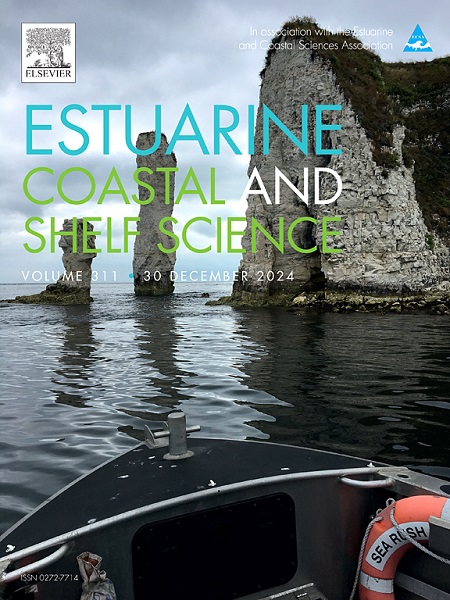Carbon and mercury burial in mangrove soils across an anthropogenic gradient
IF 2.6
3区 地球科学
Q1 MARINE & FRESHWATER BIOLOGY
引用次数: 0
Abstract
Mangrove forests are important sinks for atmospheric CO2, resulting in organic-rich soils. However, increasing anthropogenic pressures may impact mangrove carbon sequestration. This study investigated organic carbon (OC) and mercury (Hg) stocks and accumulation rates in Brazilian mangroves under different degrees of anthropogenic influences. Organic carbon stocks and accumulation rates were 285 ± 33 Mg C ha−1 and 128 ± 96 g C m−2 yr−1, respectively. The OC stocks were not significantly (p > 0.05) different in the pristine and impacted mangroves. A high variability in OC accumulation rates across intertidal gradients underscores the importance of considering small-scale vertical variability when assessing blue carbon. The relationship between Hg and OC was stronger in impacted mangroves than the well-preserved sites. This study contributes to minimize uncertainties in South America OC stocks and accumulation rates and reveals links to Hg contamination. Understanding these dynamics enhances our comprehension of blue carbon ecosystems’ potential to store carbon and filter out pollution at the land-ocean interface.

求助全文
约1分钟内获得全文
求助全文
来源期刊
CiteScore
5.60
自引率
7.10%
发文量
374
审稿时长
9 months
期刊介绍:
Estuarine, Coastal and Shelf Science is an international multidisciplinary journal devoted to the analysis of saline water phenomena ranging from the outer edge of the continental shelf to the upper limits of the tidal zone. The journal provides a unique forum, unifying the multidisciplinary approaches to the study of the oceanography of estuaries, coastal zones, and continental shelf seas. It features original research papers, review papers and short communications treating such disciplines as zoology, botany, geology, sedimentology, physical oceanography.

 求助内容:
求助内容: 应助结果提醒方式:
应助结果提醒方式:


